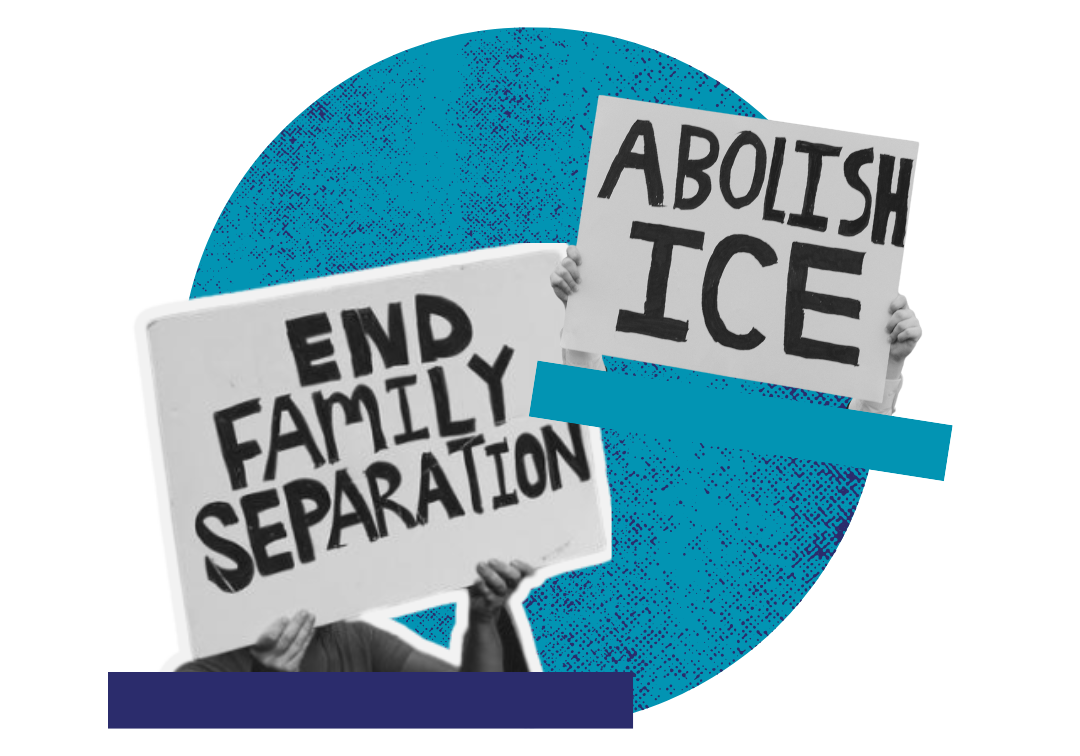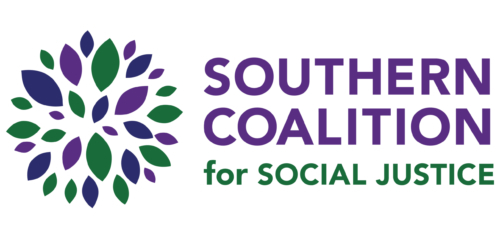REFRAMING PUBLIC SAFETY
In Whose Interest?
The Problem
Forcibly separating a parent from their child is one of the most devastating things that can happen during a court or administrative proceeding. The emotional, psychological, and neurobiological repercussions on the parent and child are powerful and lifelong. Despite this reality, parents and children are separated from one another—for weeks, months, years, sometimes indefinitely — with a disturbing degree of regularity.

A parent's right to the care and custody of their child is grounded in the U.S. Constitution. Over 100 years ago, the U.S. Supreme Court explained that “the right to marry, establish a home, and bring up children” is protected by the due process clause of the Fourteenth Amendment. Because the courts deem family “perhaps the most fundamental social institution of our society,” any government action restricting or interfering with a parent's relationship with their child implicates fundamental constitutional rights. As the U.S. Court of Appeals for the Second Circuit opined nearly 50 years ago, “[T]he right of the family to remain together without the coercive interference of the awesome power of the state ... encompasses the reciprocal rights of both parent and child.” The court explained that children have the constitutional right to avoid being “dislocated” from the “emotional attachments that derive from the intimacy of daily association” between parent and child.”
Despite these lofty pronouncements, forcible family separations occur daily in our criminal, civil, immigration, and administrative systems.
Family Separation Through the Criminal Legal System
The criminal legal system regularly separates parents from their children. According to the Prison Policy Initiative, nearly half of the 1.25 million people incarcerated in state prisons are parents of minor children. Disturbingly, only a handful of states allow judges to consider a person’s parental responsibilities when handing down a criminal sentence.

A parent’s incarceration can obliterate familial connections. Prison visitation is complicated and expensive. While most prisons allow family visits, nearly two-thirds of incarcerated individuals are housed in prisons more than 100 miles away from their families. So, visits require considerable planning, reliable transportation, and in some cases, taking time off work.
Phone calls, video chats, and emails present their own difficulties. All but two states charge incarcerated people for phone calls. Though recent federal legislation has capped the cost of prison phone calls, incarcerated people and their loved ones may still find it difficult to foot the bill. In North Carolina, phone calls to an incarcerated family member in a county jail, where someone is held pretrial, can cost up to $3.15 for a 15-minute call. These financial constraints impact how often a family member can talk to and see an incarcerated loved one.

In North Carolina, phone calls to an incarcerated family member can cost up to $3.15 for a 15-minute call.
Even after someone has been released from prison, the criminal legal system regularly imposes conditions that keep families separated. People under community supervision (e.g., probation, supervised release) routinely face conditions that regulate — and sometimes ban — contact between family members. For example, a court can prohibit a person under supervision from associating or living with another person under supervision or anyone with a felony conviction.
Some parents can lose their parental rights forever because of incarceration. According to The Marshall Project, one in eight parents who have their children placed in foster care due to their incarceration lose their parental rights. This removal rate means that incarcerated parents lose their parental rights more often than parents who sexually or physically abuse their own children. Often, prisons are unable or unwilling to transport incarcerated parents to their parental rights hearings, so judges make the life-altering, irreversible decision to terminate an incarcerated parent’s rights without their participation.
Consequences of Family Separation Due to Incarceration
Separating a parent from their child can be a traumatic experience. The many adverse consequences reverberate not only through families, but their communities as well, undermining public safety in significant ways.
Reducing the Harm
Eliminating the injuries caused by parental incarceration is a massive challenge. While there is no single solution, there are ways to mitigate the ongoing harm. At a minimum, we need policies and practices that do the following:
Alternatives to incarceration, such as home confinement, probation, or restorative justice programs, can reduce the negative consequences caused by parental incarceration by maintaining family bonds. States with parental sentencing alternatives (e.g., Washington, Massachusetts, New York, and Oregon) have seen a decline in incarceration rates for primary caregivers charged with nonviolent offenses. For example, Washington’s Parenting Sentencing Alternative (PSA) has diverted hundreds of parents from prison into supervised community-based programs since its inception, allowing them to maintain employment and care for their children. A study of Oregon’s Family Sentencing Alternative Pilot Program (FSAPP) found that children of parents given alternative sentences spent less time in the foster care system than children of incarcerated parents. The Kentucky General Assembly is considering a bill that would increase alternatives to jail and prison for parents convicted of a nonviolent offenses.
Family contact is critically important to maintaining familial bonds during incarceration. Many jails and prisons make visitation difficult by limiting or prohibiting physical contact between incarcerated persons and their families. There can be a heavy presence of law enforcement at the visit, which can be intimidating or traumatizing for children. Furthermore, the prison environment does not accommodate young children. Visiting rooms regularly lack toys, books, and places for kids to play. Creating family- and child-friendly visiting conditions, allowing physical contact during visits, and making phone and text communication with family members free for inmates are essential first steps.
Approximately one in eight incarcerated parents lose their parental rights regardless of the seriousness of their convictions. This loss of rights is driven in part by the Adoption and Safe Families Act (ASFA) of 1997. ASFA allows courts to terminate the parental rights of parents with children in foster care for 15 of the most recent 22 months. An essential first step would be to strengthen parental rights for people in prison, including preventing the termination of parental rights in cases solely based on a parent’s incarceration or engagement in a drug treatment program.
Family Separation Through the Immigration System
Family separation through the immigration system occurs at two critical points: when people are detained at the border while attempting to enter the United States, and when people who are not U.S. citizens are placed into removal proceedings and deported by U.S. Immigration and Customs Enforcement (ICE).

U.S. immigration law allows individuals fleeing violence and persecution to seek asylum. While family separations have occurred under various administrations, the first Trump administration systematically implemented a policy of separating children from their parents as a supposed deterrent to asylum seekers. When a parent would be transferred from Customs and Border Protection (CBP) custody to the U.S. Marshals Service for court proceedings, their children would then be classified as unaccompanied. CBP would then transfer those children to the Office of Refugee Resettlement (ORR), often without providing adequate information or ensuring their records were linked to those of their parents. As a result, many families were unable to reunite, creating lasting humanitarian and legal consequences.
Removal proceedings resulting in one or both parents being deported from the United States devastate entire families and communities and families, leaving children in the care of U.S. citizen family members or leaving children vulnerable victims of the family court system.
When non-U.S. citizens living in the United States are separated from their families by ICE, they enter a complex immigration system that can often lead to their removal from the country. Today, more than 16.7 million people in the U.S. live with at least one undocumented family member, including approximately 6 million children under 18. The detention of one or both parents can cause families facing immigration proceedings to suffer many of the same challenges faced by incarcerated parents as they await a decision on their immigration status.
Consequences of Family Separation Due to the Immigration System
Separating a parent from their child can be a traumatic experience. The many adverse consequences reverberate not only through families, but their communities as well, undermining public safety in significant ways.
Reducing the Harm
Eliminating the injuries caused by parental separation through immigration enforcement is a massive challenge. While there is no single solution, there are ways to mitigate the ongoing harm. At a minimum, we need policies and practices that do the following:
Instead of detaining parents and children in removal proceedings, implement community-based programs where families remain together while their immigration cases proceed. For example, the Family Case Management Program was a pilot program that was terminated during the first Trump administration that showed high compliance rates with court appearances, was less costly than detention, and, critically, prioritized keeping families together.
Individuals facing deportation are not provided court-appointed lawyers through the immigration court system. The lack of access to counsel undermines due process, particularly for children. In most jurisdictions, legal services providers cannot represent the high number of unaccompanied minors and children placed in immigration proceedings. Without a federal law establishing a right to counsel, such as the Fairness to Freedom Act, cities, counties, and states must fund deportation defense programs.
Family Separation Through the Civil / Family Court System
Each year, state and local child protective service (CPS) agencies investigate nearly a million families, often for allegations of neglect rooted in poverty rather than abuse. In some emergency cases, children are removed from their homes before a full investigation is completed and placed in foster care or kinship arrangements.

Parents who want to reunite their families must submit to extensive investigation and surveillance from CPS and family courts. These investigations can involve interrogations, home and body searches, drug tests, and invasive inquiries into nearly every aspect of family life. Unlike in criminal cases, families under CPS investigation have fewer constitutional protections, including the right to counsel.
Additionally, family courts often require parents to complete parenting or substance use programs as a condition to regain custody. These classes and additional services are often unrelated to the reason for the initial removal and can impose significant financial burdens on families that are already struggling.
Family separations often involve schools, hospitals, and law enforcement. Mandatory reporting laws require educators and healthcare providers to report suspected abuse or neglect, triggering investigations that can escalate to court proceedings. CPS agencies collaborate with law enforcement to remove children, which sometimes leads to parents facing both criminal charges and prolonged custody battles. Families caught in these overlapping legal systems endure immense hardship while fighting to stay together.
Consequences of Family Separation Due to the Civil / Family Court System
Removing a child from a parent can be a traumatic experience. These adverse consequences reverberate not only through families, but their communities as well, undermining public safety in significant ways.
Reducing the Harm
Maintaining familial integrity and eliminating the myriad ways in which families are routinely separated through existing legal systems is a massive challenge. While there is no single solution, there are ways to mitigate the ongoing harm. At a minimum, we need policies and practices that do the following:
Because CPS-led investigations into allegations of abuse, neglect, or maltreatment can ultimately lead to efforts to separate a parent from a child, legal counsel should be provided to assist families upon contact with a CPS agent. Those investigations can be confusing, disruptive, and invasive. Legal counsel can help parents navigate the family policing system, protect core constitutional rights, and negotiate with CPS.
The current family court system regularly drives adversarial interventions, which often impose services and treatment that do not remedy the larger problems families face and, all too often, sever family connections. An essential first step is to organize services and other forms of intervention outside of the family court system that address each unique family’s needs, such as financial assistance, healing circles, mutual aid, church counseling, and peer support networks.
